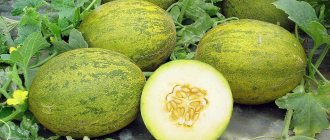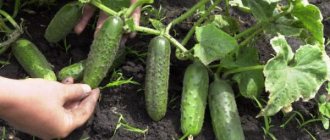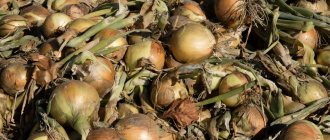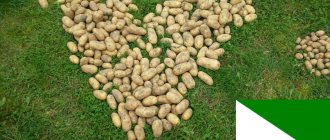The fruits of a heat-loving plant, consumed without heat treatment, are a source of vitamins, minerals, pectins, and natural sugars. The short summer does not exclude the cultivation of melon in Siberia in open ground or greenhouses. To get a harvest of sweet, aromatic fruits, homestead owners select early-ripening varieties for planting and follow the rules of agricultural technology.
The best melon varieties for Siberia
Siberia has a vast territory with different climatic conditions. Therefore, it is impossible to give general recommendations for growing melon for all its regions, although in general these territories have some common climatic features: the predominance of northern winds, short summers and changeable, unpredictable weather. In this regard, in most of Siberia it is possible to grow melon in open ground, but not always. If the summer turns out to be cold and rainy, there will be no harvest. Growing melon in a greenhouse, subject to the rules of agricultural technology, will certainly please you with the results. Success depends to a large extent on the right variety.
Varieties for open ground
Due to the short summer, varieties of early (60-75 days from the appearance of full shoots to the onset of removable maturity), mid-early (65-85 days) and mid-ripening (75-95 days) ripening periods are selected.
Collective farmer
Traditionally, the well-known Kolkhoznitsa (full name - Kolkhoznitsa 749/753) is grown in Siberia. From germination to ripening it takes 77–95 days, depending on weather conditions. This is a long-climbing plant with a thin stem. The fruits are spherical, medium-sized, average weight - 0.7-1.3 kg. Usually the surface is smooth, yellow-orange, without a pattern, but sometimes a coarse mesh is found. The bark is hard, flexible, and of medium thickness. The pulp is juicy, sweet, fibrous, semi-crispy. Productivity 1.5-2.2 kg/m2. The collective farmer is prone to severe damage by powdery mildew and anthracnose, and is relatively resistant to bacteriosis. It has good transportability, which is why it is popular among farmers.
Kolkhoznitsa melon has been grown in Siberia for a long time
Altai
The variety was obtained in Barnaul in 1937 and entered into the State Register of Breeding Achievements in 1955. The berries are similar to Kolkhoznitsa in size and appearance, only the shape is more elongated and the size is slightly larger - 0.8-1.6 kg. The taste is satisfactory, “for everyone.” Keeping quality and transportability are low. The variety is grown for personal use in areas with short summers. The period from the first shoots to ripening is only 65-75 days. Harvest from 1 m2 - 2.5 kg.
Altai melon bred in Siberia
Tender
This melon was bred at the Federal Scientific Center for Vegetable Growing in 2004 specifically for Siberia. The ripening period is 67-69 days from emergence. It has small (0.8-1.1 kg) berries of light yellow color. The shape of the fruit is oval, segmented. The light green pulp has a delicate, juicy, fine-grained structure and excellent taste. Productivity 80-142 c/ha.
Melon Tender has light green juicy pulp
Varieties for the greenhouse
Many hybrids have been created for growing melon in a greenhouse, although there are also varieties.
Solar
An early maturing hydride of domestic selection, bred specifically for cultivation in greenhouses. Produces almost one-dimensional berries with an average weight of 2.1-2.7 kg. The fruit is broadly elliptical in shape with smooth yellow bark. Pattern in the form of small and medium yellow dots. The pulp is crumbly, tender and juicy. The taste is excellent. From 1 m2 in a greenhouse, 5.1–5.7 kg of fruits are obtained.
Melon Solnechnaya is an early ripening hydride of domestic selection, bred specifically for growing in greenhouses
Moon
Barnaul variety for growing in garden plots and farms in film greenhouses. Removable maturity occurs 74-80 days after emergence. The fruit is small (1.1 kg), oval, smooth. It has a continuous, knitted, delicate mesh. The color of the thin bendable bark is yellow. The pulp is medium thick, granular, slightly juicy. The taste is good, slightly sweet. The yield from 1 m2 is 8.1 kg. The variety has good commercial qualities and transportability. It has comparative resistance to stem ascochyta blight.
The Luna melon has smooth yellow bark.
Assol
Barnaul mid-season hybrid for film greenhouses. The fruits are harvested 80-90 days after the emergence of full shoots. The berry is oval-round, segmented, yellow with creamy-gray stripes. The bark is thin and bendable. The pulp is light green in color, has medium thickness, a tender, juicy, granular structure and an excellent sweet taste. The fruits are one-dimensional with an average weight of about 1 kg. Productivity - 6.6 kg/m2. Product quality is high. Resistance to stem ascochyta is average.
Melon Assol has light green flesh
Preparing seeds and soil
For better germination and disease prevention, seed material is subjected to pre-planting preparation:
- calibrated in water, selecting sunken specimens, discarding those that floated;
- hardened by immersing alternately for half an hour in water at a temperature of 45°C, then 11°C;
- disinfect for 30 minutes with a manganese solution (1 g of dry matter per glass of water);
- soak until germination with growth accelerators - Epin, Zircon, aloe juice.
Agronomists advise using melon seeds collected 2-3 years ago. Last year's flowers have a high germination rate, but male flowers predominate, which reduces the yield. If the seeds are covered with glaze, they are not soaked; they are sown dry.
Before planting a melon in open ground, prepare a place for melons. Choose a sunny area, protected from drafts by outbuildings, bushes, and trees.
The culture does not get along well next to potatoes, cabbage, and cucumbers. Favorable neighborhood - tomatoes, root vegetables, spinach, corn, pumpkin. The yield of melon increases if carrots, beets, legumes, and onions previously grew in the garden. Related predecessors (watermelon, cucumber, eggplant) deplete the soil and leave behind pathogens of common diseases.
In autumn, the area is cleared of debris and weeds. Dig a shovel onto a bayonet, add manure or humus (5 kg per 1 sq. m.). Melon prefers sandy loam, loamy, and chernozem soils. The plant withers and dies on acidic, salty, swampy soil.
In the spring, when the soil warms up to 13°C, the site is dug up with the simultaneous application of mineral fertilizers. For 1 sq. m. you will need 20 g of potassium salt, 40 g of superphosphate.
Growing conditions
To successfully grow melon, you need to create favorable conditions for it.
- The ideal temperature for melon is between 20-25°C. At temperatures above 30°C and below 15°C, growth stops.
- Melon grows well in loose, fertile soils. Heavy clay soils require loosening by adding sand and peat.
- The soil reaction should be neutral or slightly acidic, a pH level of 6.0-6.8 is optimal.
- Among the predecessors and neighbors should not be: pumpkin;
- cucumbers;
- potato;
- parsley.
- onion;
Harvest and storage
In order to preserve melons for as long as possible, it is necessary to correctly assess the degree of their ripeness and the period of harvest that depends on this. The condition of the mesh surface, characteristic of most melon fruits, helps in this. If the grid on the surface is not clearly expressed, then the fruits are not yet ripe. They will no longer acquire full ripeness during storage. Melons with deep nets ripen quickly, but will be stored for no more than 2 months. Therefore, often you have to choose an intermediate option. If a variety is grown that does not have a mesh surface, then the degree of maturity is determined by the intensity of the yellow color of the fruit.
If we talk about the long-term preservation of melons, it should be emphasized that fruits of late-ripening varieties are suitable for long-term storage, which in Siberian conditions can only be grown in greenhouses. Harvested melons sent for storage should have a 5-centimeter-long stalk remaining. The optimal storage temperature is between +1°C and +3°C, with humidity up to 80%.
Important! To obtain the best harvest, you should normalize the number of fruits on the bushes, leaving no more than 4 melons on them. A larger number of fruits will not be able to achieve either the optimal size or the required sweetness.
Growing melons in open ground in the difficult climatic conditions of Siberia, although associated with some difficulties and even risks, is nevertheless becoming increasingly widespread in the Trans-Ural regions
This is facilitated by the successes of breeders, and new agricultural techniques, and the enthusiasm of Siberian melon growers, whose reward is fragrant fruits that are not inferior in taste to their southern relatives
Growing melons in open ground in the difficult climatic conditions of Siberia, although associated with some difficulties and even risks, is nevertheless becoming increasingly widespread in the Trans-Ural regions. This is facilitated by the successes of breeders, and new agricultural techniques, and the enthusiasm of Siberian melon growers, whose reward is fragrant fruits that are not inferior in taste to their southern relatives.
Planting seeds
For various reasons, a gardener may prefer the seedless method of growing melon. Subject to certain conditions, this can be done in Siberia.
In open ground
In Siberia, the method of growing various crops in warm beds is widespread. To arrange it, remove the top layer of soil approximately 20-30 cm thick and fill the resulting hole with organic waste, half-rotted compost, and humus. A fence made of boards and flat slate is installed along the perimeter. The volume is filled with chernozem removed before. By overheating, the organic matter will warm the roots of the plants. Arcs are installed along the bed along which the film or covering material will be stretched.
Arcs or a wooden frame are installed above the warm bed
The sowing time is calculated according to the algorithm outlined above. The holes are marked and prepared for planting in the same way as with the seedling method of growing. 3 seeds are sown in each hole to a depth of 2-3 cm, watered and covered with black film. It is removed after seed germination and the bed is covered with agrofibre in arcs. Further actions with sprouts are the same as with seedlings. After the third true leaf, they are pinched and excess sprouts are removed.
To the greenhouse
Planting seeds in a polycarbonate greenhouse is no different from what was just described. The only difference is in the timing - seeds can be planted in a greenhouse 2-3 weeks earlier than under shelter.
Features of growing in the Siberian climate
To help Siberians, Russian breeders have developed early melon varieties that have time to ripen during the short warm season. Features of cultivating melon begin with selecting seeds, growing seedlings, and preparing the site.
On a note! The plant develops at an average daily temperature of 15°C.
Summer gardeners are interested in how to properly plant melons in Siberia in order to collect tasty fruits. Choose one of two options - create high ridges for melons or use a greenhouse.
To get large, healthy fruits, planting dates are calculated, fertilizers are applied, and bushes are formed. To treat diseases and get rid of pests, the lashes are treated with fungicides and insecticides.
Warm beds
Growing melon in Siberia in open ground is possible on an area raised by a “cushion” made in the fall.
Algorithm for preparing a warm bed:
- for uniform heating by the sun, place the melon in the direction from east to west;
- dig a trench 1–1.2 m wide on the bayonet of a shovel, maintaining fertile soil;
- the bottom is loosened with a pitchfork;
- construct a box with a side height of at least 20 cm;
- the first drainage layer is lined with branches, half-meter logs, and roots;
- sprinkle with bark and sawdust on top;
- the second organic layer is made from manure, fallen leaves, tops, straw;
- the removed turf is laid on top and compacted;
- install metal arches;
- in the spring the ground is watered and seedlings are planted;
- The film is pulled over the arcs.
Planting in the ground in warm beds means successful cultivation of melon in Siberia, obtaining strong, healthy fruits in a short time due to increased heating, aeration, and improved soil composition.
Greenhouse
How to grow a melon in a greenhouse in Siberia so that its sugar content and yield are not inferior to fruits ripened in open ground? Vertical space is used in shelters, so choose hybrids with small fruits that do not break off the vines.
The bushes are formed into 1–2 vines, which are tied to a trellis, so when planting, a distance of 40–45 cm is left between the bushes and rows.
In the fall, the acidity of the soil is checked with litmus paper. If the indicator turns red, the ground is alkalized with slaked lime (1 tbsp per 1 sq. m.).
Fertilizers are applied per square meter of land:
- 5 kg of humus;
- 1 tsp saltpeter;
- 30 g superphosphate;
- 2 tbsp. ash.
On a note! Month-old seedlings are planted by mid-June. You can sow the seeds on May 15, but then you will have to cover them with lutrasil at night.
Experienced melon growers recommend growing melons in Siberia in a polycarbonate greenhouse. It is more airtight than glass and retains heat better. Film structures maintain the temperature only a couple of degrees above the street temperature.
To form an ovary, artificial pollination is done. In the morning, the male flowers are torn off, applied to the female ones, or the culture is sprayed with the Ovary preparation.
Greenhouses are periodically ventilated. Plants are watered as the soil dries, fed with Ideal or wood ash, scattering it around the holes.
Melon care
Spring and early summer in Siberia are distinguished by the contrast of day and night temperatures, the difference of which can be more than 20°C.
In the open ground
In such conditions, young plants often require additional night insulation. For this purpose, plastic bottles with a cut neck and cardboard boxes are used. An additional layer of agrofibre can also be laid along the arcs. From about mid-June, shelters will no longer be needed.
In the spring, when frost sets in, melon seedlings can be covered with cardboard boxes.
Watering
Melons need regular and frequent watering during the growth stage of young plants. At this time, the soil should always be moist. To preserve moisture, the beds are mulched with hay, rotted sawdust, and humus. An excellent option is to cover the beds before sowing with black film. In this case, the seeds are sown in the cut holes, and further loosening and weeding will not be required. Watering in this case is also simplified. In addition, under the black film the earth warms up better, and heat is retained in it even on cold nights. When the bushes grow, the number of waterings is reduced to once every 7-10 days. It is convenient to water melons using drip irrigation systems. Irrigation is completely stopped when the fruits grow and begin to turn yellow.
If, due to a rainy summer, the melon beds are too waterlogged, you may need to sometimes cover them with film in arcs to protect them from rain. In this case, the ends of the tunnel are left open.
Recent Entries
Lilac perennials that are beautiful, compact and do not crowd out other plants Why when buying seedlings you should not take the sellers’ word for it and how to determine the age of the plant using 3 signs Tomato seedlings have turned purple or whitish: why the color has changed and how to save the plants
Convenient watering of melons using a drip irrigation system
Top dressing
A well-stocked garden bed usually contains adequate amounts of fertilizer. But if the bushes do not grow well, you should feed them with nitrogen. It is best to use liquid forms of organic matter. In a warm place, mullein (3 liters per bucket of water) or chicken droppings (take half as much) are infused in water for a week. The resulting fertilizer is diluted with water approximately 5-7 times and fed to the melons. Repeat this type of feeding 2-3 times with an interval of 7-10 days. During the period of fruit growth and ripening, you can use an infusion of wood ash (2 liters per bucket of water). In addition, complex fertilizers for melons and melons are suitable. They are sold under the trademarks Clean Sheet, Sudarushka, Agricola and others.
Formation and normalization
Before forming a melon, you should know that in varietal plants the fruits are formed on the side shoots, in hybrids - on the main stem. In open ground, varietal melons are often planted and formed into 2-3 stems. Each stem is pinched above the fifth leaf and spread evenly over the surface of the bed. From the axils of the remaining leaves, side shoots grow, on which flowers bloom. Depending on the variety, from one to five fruits are left on each stem. The more melons you leave, the smaller they will be. If normalization is not carried out at all, then too many fruits may set, they will be small and will not ripen. Each fruiting shoot is pinched behind the fifth leaf growing after the fruit.
Pinching and pruning
During the growth process, you should carefully monitor the formation of stepsons in the axils of the leaves and periodically remove them. Side shoots that have not formed ovaries are also pruned. These parts of the plant that are not involved in fruiting take up part of the nutrition, thereby reducing the size and weight of the fruit.
Melon care in a greenhouse
Caring for melon in a greenhouse has its own characteristics. The first is related to the formation of the plant. Since hybrids, in which fruiting occurs on the stem, are usually planted in a greenhouse, all side shoots are removed. Usually one or two shoots are left, which are tied vertically to the trellis. The fruits are placed in spacious nets, which are hung so that the melons do not break under their own weight.
The second feature is that bees do not enter the greenhouse, so the gardener has to take on their role. Artificial pollination is usually carried out in the morning. To do this, use a soft brush, which collects pollen from male flowers and transfers it to female flowers. Female flowers can be distinguished by the presence of a thickening in their lower part - this is the future ovary of the fruit.
You can do without a brush. They pick a male flower and carefully tear off its petals so as not to shake off the pollen. Then, touching the stigma of the female flower with the male flower, they fertilize it. This should be done with a reserve - subsequently, from the formed ovaries, it will be possible to select the best ones and remove the rest.
In the greenhouse you will have to work as a “bee”
The third feature of growing melon in a greenhouse is the need for regular ventilation on hot days. All other rules and care techniques are the same as when growing in open ground.
Video: shaping and caring for melons in a greenhouse
When to plant melon in open ground
Melons are southern, heat-loving plants. When choosing any variety, keep in mind that it will form ovaries at a stable temperature of 25 C, and the fruits will begin to ripen only at 30 C. Therefore, try to buy early, mid-early varieties. For regions with an unpredictable climate, only ultra-early ones are suitable. Late ones are only for residents of southern latitudes.
By region
In warm regions, melon seeds are sown in open beds in April. In mid-latitudes, the plant is propagated by seedlings:
- Sowing seeds - end of April.
- Moving to a permanent place - mid-end of May.
In Siberia and the northern regions, during early spring and warm summer, they focus on the same dates.
According to the lunar calendar
I will present favorable days for sowing seeds and moving to a permanent place according to the lunar calendar:
- April: 1-4, 8-13, 15-19, 23-27, 29-30.
- May: 1-3, 7-11, 13-17, 21-25, 27-31.
Accordingly, the following dates are unfavorable:
- April: 5-7, 14, 20-22, 28.
- May: 4-6, 12, 18-20, 26.
If you soak the seeds, the day of sowing will be the date when they are in a moist environment.
Diseases and pests
To prevent your work on growing melon in Siberia from going down the drain, you should know the signs of major diseases and pests, as well as methods of preventing and controlling them.
The main diseases to which melon is susceptible in Siberia
The main diseases of melon are usually fungal. Therefore, methods of treatment and prevention are often similar and are common to various diseases.
To combat fungal diseases, as well as to prevent them, drugs called fungicides are used.
Powdery mildew
Numerous whitish spots appear on the leaf blade. As they grow, they cover the entire leaf, which as a result becomes brittle, brittle and completely dries out. Prevention of the disease is compliance with crop rotation and timely removal of weeds. As a treatment, pollination of plantings with 80% sulfur powder at a rate of approximately 400 g per hundred square meters helps. Three treatments with an interval of 10 days are enough. They must be completed 20 days before harvest. The most effective means of combating powdery mildew is Topaz. It not only stops the development of the disease, but also blocks its spread, as it destroys the spores. This drug is excellent for Siberia, since it can be used at low temperatures. For 10 liters of water, it is enough to add 2 ml of fungicide.
Powdery mildew covers the leaves with whitish spots
Downy mildew (downy mildew)
A common disease that most often affects a plant in the early stages of development. First, yellow-green spots appear on the leaves, increasing over time. Later, fungal spores accumulate on the underside in the form of a purple coating.
For preventive purposes, it is recommended to pre-sowing disinfection of seed material by dressing it in a 1% solution of potassium permanganate. You can also heat treat the seeds by keeping them for 2 hours in a thermos with hot water at a temperature of 45°C. Planted seedlings or young plants that emerged from seeds using the seedless growing method are sprayed with a 0.1% solution of urea or a 1% solution of Bordeaux mixture. Can also be treated with Topaz.
Cucumber mosaic
This is a viral disease that is transmitted by melon aphids, and viruses accumulate on the roots of weeds. Signs of the disease:
- yellow-green spots on the leaves,
- their deformation and the formation of tubercles between the veins,
- falling leaves and flowers,
- cracks at the base of the stem,
- slowdown in growth
- warty surface of the fruit.
Prevention measures: maintaining crop rotation, fighting melon aphids. There are no ways to combat an already existing disease. You can only pick off the affected leaves and shoots, thus slowing down the spread of the disease and saving part of the crop. After harvesting, all tops and roots should be burned, and crops that are not susceptible to cucumber mosaic should be planted in this place for the next 3 years.
Gray mold
This disease is often observed in Siberia because it develops in cold, wet weather. The optimal temperature for it is 15°C. Affected young shoots and ovaries become watery and quickly become covered with mold. If detected, they are removed and destroyed, and weeds are also regularly and thoroughly removed. Melons are watered in ditches or using drip irrigation systems; sprinkling is not used.
Young shoots and ovaries affected by gray mold become watery
For treatment use a solution:
- water - 10 l,
- zinc sulfate - 1 g,
- urea - 10 g,
- copper sulfate - 2 g.
Root rot
Under unfavorable temperature and soil conditions, plants weaken and may develop root rot. Its causative agent is found in the soil, and occasionally in seeds. Often appears in greenhouses when optimal temperature and humidity parameters are not observed. Affected stems of seedlings become thin, turn brown, and the plants die. On mature vines, the leaves begin to turn yellow and wither, the roots turn brown, and the stems become macerated. The disease can be prevented by pre-sowing disinfection of seeds, strictly observing the rules of agricultural technology and the parameters of the heat and humidity regime.
Melon pests
There are a number of insects in Siberia that love to feast on the fruits and leaves of melon. To combat them, insecticides and acaricides are used.
Insecticides are means of fighting insects, acaricides are means of fighting mites.
melon aphid
This small insect overwinters on the roots of weeds. Distributed in areas of Western Siberia. In spring, when the air temperature rises to 12°C, aphids crawl out and begin to feed on weeds, then move on to crop plants. Insect colonies colonize the lower surface of leaves, feed on their sap, and also infect flowers and shoots.
Aphids are carriers of various infections, including cucumber mosaic.
Colonies of melon aphids settle on the leaves, stems and flowers of melon
To combat harmful insects in cold weather, Decis is used, which will effectively and quickly (in 10-12 hours) destroy aphids. For spraying, dissolve 0.35-0.5 g of the drug in 5 liters of water. This amount is enough to process 100 m2 of beds. In hot weather, use Fitoverm - it will take 72 hours to completely defeat the pest. For treatment, take 2 ml of the drug per 1 liter of water. In addition, there are many folk remedies to combat this well-known pest.
Melon fly
The melon fly can infect melon crops in areas of Siberia bordering Kazakhstan. The flight period is extended and lasts about a month. Female flies lay eggs under the skin of melons, where larvae appear within 3-4 days. They immediately penetrate the pulp and begin to feed on it, making numerous winding passages. The larvae are 5-10 mm long and have a lifespan of 10 days. Affected fruits rot and are unsuitable for food. Infestation by the melon fly can be detected by the presence of small holes on the surface of the fruit through which the larvae have penetrated inside.
Melon fly damage can be detected by the presence of small holes on the surface of the fruit.
For the purpose of prevention, deep autumn plowing is carried out (deep digging of the soil in late autumn), pre-sowing seed treatment, and early ripening varieties are used. An effective measure is to protect plantings with light covering material (spunbond, lutrasil, etc.) with a density of 17 g/m2 for the period of flight of the fly.
Preventive treatments with insecticides such as Decis, Fufanon, Fitoverm, Iskra-Bio are effective. They are used during the flight of the fly with an interval of 10-15 days. Solutions are prepared according to the instructions for use.
Spider mite
In closed ground conditions, the spider mite feels best, although it is widespread everywhere. Dry, hot summers are especially favorable for it. Settles on leaves (on both sides), stems and fruits (in case of massive infestation). Damaged plants become pale yellow in color, and a thin cobweb appears in the internodes of the stems and between adjacent leaves. The leaves become discolored and die, the stems become bare, and fruiting decreases.
In the internodes and between the leaves, the spider mite weaves a thin, transparent web
For the purpose of prevention, the top layer of soil in greenhouses is replaced, fumigated, and regularly treated with acaricides. We can recommend Karbofos, Actellik, Apollo. These drugs should be alternated, as they are addictive.
Where to grow watermelons - in a greenhouse or in open ground?
ira: “Girls, watermelons and melons grow well on the ground. Every year I grow it both in a greenhouse and just in the garden. In the greenhouse they are more difficult to set, there are fewer of them there, since, apparently, there are fewer pollinators (I pollinate additionally), but outside there are more melons and watermelons. But in a greenhouse they ripen faster. You just need to allocate a sunny place for a garden bed outside.” Ballusha: “I can’t say anything about the taste of greenhouse watermelons. I have never grown watermelons in a greenhouse. When growing watermelons in open ground, there is a risk of being left without a harvest, because... they react negatively to lower temperatures. Especially at the beginning of growth, you have to keep the plants under cover all the time. But watermelons do not ripen at home; all processes must be completed in the garden. It's up to you to choose."
Sowing seedlings
It is preferable to use purchased seeds, especially if you plan to plant heterotic (improved) F1 hybrids - the first generation. When collecting varietal seed material yourself, it is recommended to store it for three to four years.
It has been noticed that on bushes grown from fresh seeds, a larger number of male flowers - barren flowers - are formed.
Sowing begins in mid-April or early May, since the seedlings will need to be planted in a permanent place 25-30 days after emergence. The seeds are pre-disinfected in a solution of a fungicidal preparation (Fitosporin, Glyokladin, Effect, etc.), the nutrient substrate and containers are disinfected.
Purchased seed material from reputable manufacturers does not require preparation before sowing, as it undergoes high-quality sorting and processing
The planting depth for dry or sprouted seeds on wet gauze is standard - 2-4 cm. To speed up the sprouting of sprouts, the containers are covered with a transparent film and placed in a bright and warm (+22...28 ℃) room. After the first leaf appears, regularly (as the top layer of soil dries) water under the roots with warm water. When the third pair of leaves is formed, the top of the main vine is sometimes pinched to stimulate branching.
Plants that have produced 4-5 true leaves, 10-14 days before planting in the garden begin to slowly harden off by opening the doors/windows of the greenhouse or taking them out into the fresh air, avoiding drafts and direct sunlight. The procedure time is increased gradually.
The strengthened seedlings are transplanted into the ground when the ground warms up at least 15 cm deep. Seedlings are placed in 1-2 rows on beds (preferably “warm” or bulk “ridges”) with a distance of 50 cm from each other. For the first time, it is recommended to protect them with shelter on arches.
Graft
Advanced farmers consider it effective to prepare seedlings using the grafting method in order to increase the plants' resistance to adverse environmental factors. Based on the results of many years of testing, pumpkins (large-fruited, hard-barked, gray Volga, waxy, figoleaf), lagenaria, and zucchini . professional rootstocks are also on sale : “Avatar”, “Quest”, “Cobalt”, “Consista”, “Monolith”, “Sly”, “Ferro”, “Shintosa” , having almost perfect compatibility with various pumpkin crops.
For effective grafting, it is important that the seedlings of the rootstock and scion are approximately the same size and age
The optimal time for grafting is considered to be the period when the first true leaf is still in its infancy. With each passing day, the likelihood of success of the operation decreases.
The most effective technology is considered to be the combination of “tongues”, in which fusion occurs faster and easier, and the plants ultimately produce a more abundant early harvest. The step-by-step instructions for carrying out the work are similar to grafting a cucumber onto a pumpkin.
Brief description of the culture
There are a large number of different subspecies of melons. The melon fruit, as a rule, has a flattened-round, spherical, oval or ellipsoidal shape.
The dense peel is green, yellow, brown or white, ribbed or smooth, dotted with chaotic shallow grooves, stripes or strokes, and a mesh-like pattern. The taste and degree of sweetness may vary depending on the variety and place of cultivation.
An annual herbaceous plant with creeping vines and actively growing tendrils, it tolerates drought calmly, but is completely intolerant of high soil and air humidity and cold snaps, even temporary ones.
One bush can produce from two to eight fruits weighing from 1.5 to 10 kg











